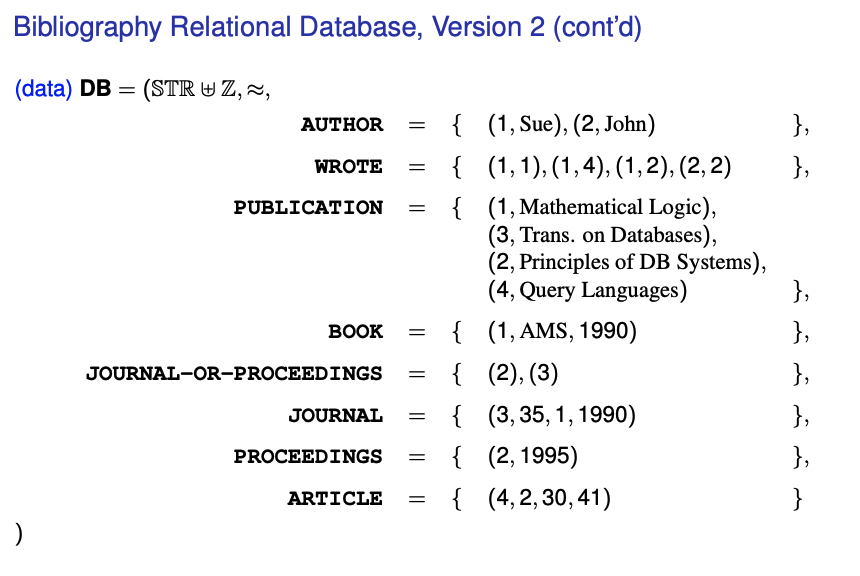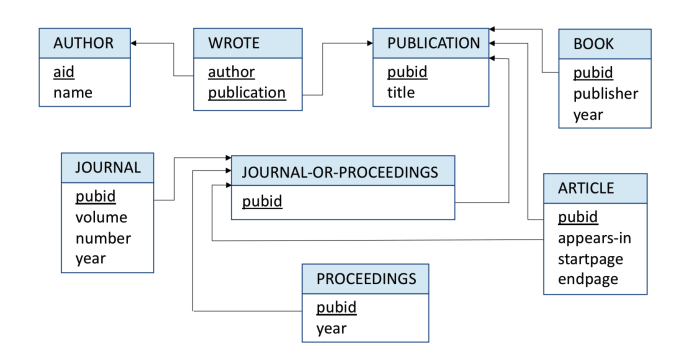CS348: Introduction to Database Management
Link to course notes here.
signature - doesn’t change, it’s the high-level metadata Instance - the actual data
One thing he said is super interesting: Most modern databases have implementations for conjunctive (AND). For disjunctive, they have some sort of heuristic. I need to check this.
Read this instead https://oberstar.eu.org/share/Documents/The-Manga-guide-to-databases.pdf.
Concepts
Module 1: Overview of Data Management
- Three-Tier Architecture
- Database
- RDBMS
- DML
- DDL
- Transaction (Database)
- ACID Properties of a Transaction Module 2: Relational Database
- Relational Data Model
- Relational Calculus (RC Query) Module 3: Introduction to SQL Module 4: Advanced SQL
- Integrity Constraint
- NULL Values
- SQL Trigger
- SQL Authorization Module 5: Applications Programming and SQL
- Embedded SQL Module 6: Applications Programming with Dynamic SQL
- Dynamic SQL Module 7: The Entity Relationship Data Model
- Entity-Relationship Model Module 8: Logical Mapping
- Also see Entity-Relationship Model Module 9: Data Dependence
- Functional Dependency
- BCNF Module 10: Query Evaluation
- Two-Tier Architecture
- Relational Algebra Module 11: Transaction and Recovery Management
- Concurrency Control
- Serialization Graph
- Two Phase Locking
- Deadlock
- Failure Recovery
Resources:

